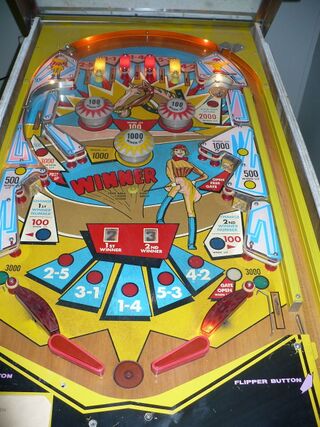Difference between revisions of "Winner"
From Sega Retro
m |
|||
| Line 6: | Line 6: | ||
| system=Electro-mechanical | | system=Electro-mechanical | ||
| players=1 | | players=1 | ||
| − | | releases={{ | + | | releases={{releasesArcade |
| − | | | + | | empb_date_jp=1972 |
}} | }} | ||
}} | }} | ||
| Line 35: | Line 35: | ||
}} | }} | ||
| − | + | ==References== | |
| − | + | <references /> | |
Revision as of 13:58, 5 December 2017
| Winner | |||||
|---|---|---|---|---|---|
| System(s): Electro-mechanical | |||||
| Publisher: Sega | |||||
| Developer: Sega | |||||
| Number of players: 1 | |||||
|
This teeny-tiny article needs some work. You can help us by expanding it.
Winner is a 1972 electro-mechanical pinball table manufactured by Sega. The game has a horse racing theme.
Winner is significant for two reasons, firstly as it stands as Sega's first self-engineered pinball table (the company had previously made a business in Japan importing tables from the US by Bally and Williams), but also because it marks the beginnings of the Japanese pinball scene which saw a run of successes during the 1970s. In a market dominated by US imports, Sega's tables were significantly cheaper and could offer better returns, with games priced as low as ¥30 (¥50 being the standard at the time).
Winner was not released outside of Japan.







